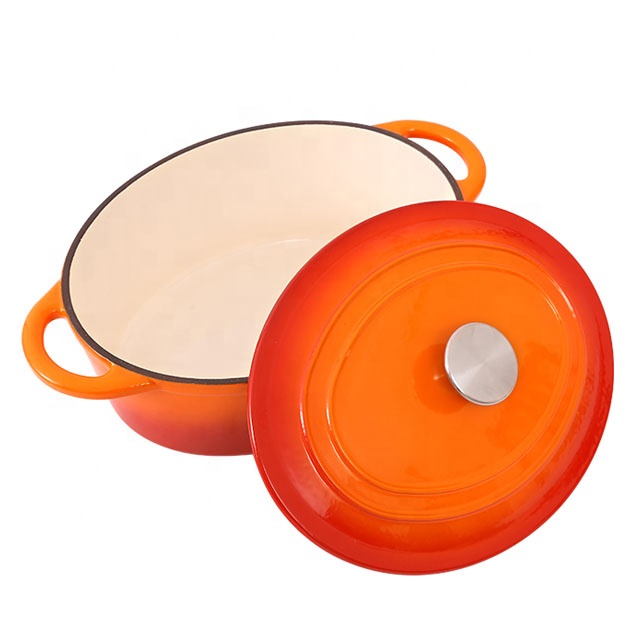
Versatile Cast Iron Round Skillet for Perfectly Cooked Meals Every Time
The Timeless Appeal of Cast Iron Round Skillets
When it comes to cookware that marries durability, versatility, and an unmistakable sense of tradition, few items stand out quite like a cast iron round skillet. For centuries, these culinary staples have graced kitchens around the world, proving themselves as indispensable tools for both novice cooks and culinary maestros alike. The enduring popularity of cast iron skillets can be attributed to their unique properties, wide range of uses, and the rich history that accompanies them.
The Benefits of Cast Iron
One of the most notable attributes of cast iron cookware is its impressive heat retention and distribution. Unlike many modern alternatives, cast iron skillets can withstand high temperatures and maintain consistent heat across their surface. This characteristic makes them ideal for searing meats, sautéing vegetables, and even baking. Whether you are starting a beloved family recipe or experimenting with new ones, the ability to achieve an even cook and a beautiful crust on your food is often unmatched.
Moreover, cast iron skillets are naturally non-stick when properly seasoned. The process of seasoning involves applying a layer of oil to the skillet and heating it until the oil polymerizes, creating a durable and non-stick surface. With time and use, this seasoning develops and becomes a cherished aspect of the skillet. Unlike chemical non-stick coatings, which can degrade over time, a well-seasoned cast iron skillet can last for generations, becoming a cherished heirloom passed down through families.
Versatile Uses
The versatility of a round cast iron skillet cannot be overstated. From stovetop to oven, it adapts seamlessly to different cooking methods. You can simmer sauces, fry chicken, bake cornbread, or even prepare desserts like frittatas and skillet cookies. Furthermore, its ability to transition easily from the stovetop to the oven makes it an excellent choice for recipes that require both cooking methods. Imagine starting a dish on the stove, browning the meat and vegetables in the skillet, and then finishing it off in the oven for a perfect bake—all in one piece of cookware.
cast iron round skillet

In addition to savory dishes, cast iron skillets can also be a key player in breakfast preparation. Whether you’re whipping up a hearty serving of pancakes, a savory shakshuka, or old-fashioned bacon and eggs, the heat retention makes it easy to achieve that perfect golden crust. Plus, the skillet’s durability means it can handle anything from high heat searing to slow-roasting without compromising its integrity.
The Heritage of Cast Iron Cookware
Beyond their practical benefits, cast iron skillets carry a storied heritage that speaks to the heart of home cooking. Many people have fond memories of cooking with family members or learning to prepare meals with a trusted cast iron skillet. Over time, these pieces of cookware become infused with culinary history, absorbing flavors and memories with each use. This deep connection to tradition adds an emotional layer to their practical use, making them more than just appliances; they are part of a family’s narrative.
Care and Maintenance
While cast iron skillets are built to last, a little care goes a long way in preserving their lifespan. After each use, it’s essential to clean them properly—hot water and a stiff brush are usually all that’s needed. Avoid soap unless absolutely necessary, as it can strip away the seasoning. After washing, a light coat of oil can help maintain the skillet's seasoning and prevent rust.
In conclusion, cast iron round skillets are much more than kitchen tools; they represent a rich tapestry of culinary heritage, practicality, and adaptability. Whether you are an experienced chef or a home cook just getting started, incorporating a cast iron skillet into your kitchen will undoubtedly enrich your cooking experience and bring countless meals to life. With proper care, these skillets are bound to remain valuable companions in the kitchen for years to come.
-
Season Cast Iron Perfectly with GPT-4 Turbo TipsNewsAug.01,2025
-
High Quality Cast Iron Cookware - Baixiang County Zhongda MachineryNewsAug.01,2025
-
Premium Cast Iron Pan: Durable & Perfect HeatNewsAug.01,2025
-
High Quality Kitchen Durable Black Round Cast Iron Cookware Pancake Crepe Pan-Baixiang County Zhongda Machinery Manufacturing Co., Ltd.NewsAug.01,2025
-
Cast Iron Cookware - Baixiang County Zhongda Machinery | Nonstick, Heat ResistanceNewsAug.01,2025
-
High Quality Kitchen Durable Black Round Cast Iron Cookware - Baixiang County Zhongda Machinery | Non-Stick, Heat Retention, DurableNewsJul.31,2025


